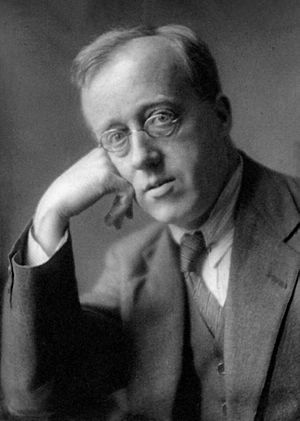This Have I Done for My True Love facts for kids
"This Have I Done for My True Love" is a famous song by Gustav Holst. It's also known as "Tomorrow Shall Be My Dancing Day". He wrote it in 1916. The words come from a very old Christmas song. The music sounds so much like traditional English folk songs that people sometimes think it's an old folk song itself! Many people think it's a brilliant piece of music.
How the Song Was Made
In 1916, Gustav Holst lived in a small house in the countryside. It was near a town called Thaxted in Essex, England. There, he learned about an old Cornish carol called "Tomorrow Shall Be My Dancing Day".
The local vicar, Conrad Noel, found the words in an old book from 1833. He copied them and put them up in the church. Holst thought the original tune for the carol wasn't very exciting. So, he decided to write his own music for it.
Holst wrote the music for a mixed choir. His style was influenced by old English madrigals. Madrigals are a type of song from the 1500s and 1600s. Even with these influences, the melody he created sounded very much like a folk song. Because of this, people often mistook it for a traditional folk tune. Holst dedicated the song to Conrad Noel.
The carol's words talk about the idea of people being saved through a "General Dance." This idea really interested Holst. He started looking for other works that connected dancing with worship. This search later led him to compose another important piece called The Hymn of Jesus.
First Times It Was Performed
The song was first performed in the Thaxted parish church. This happened on May 19, 1918. Gustav Holst himself was the conductor for this first performance.
The first time the song was performed in London was later. It took place at the Aeolian Hall on December 23, 1919. The choir that sang was called the Oriana Madrigal Society. They were conducted by Charles Kennedy Scott.
See also
- List of compositions by Gustav Holst


